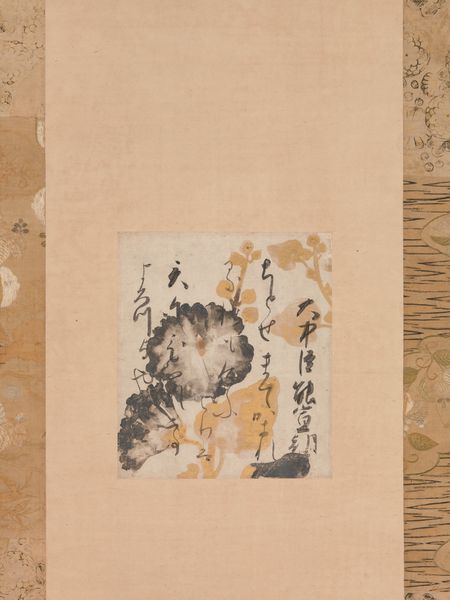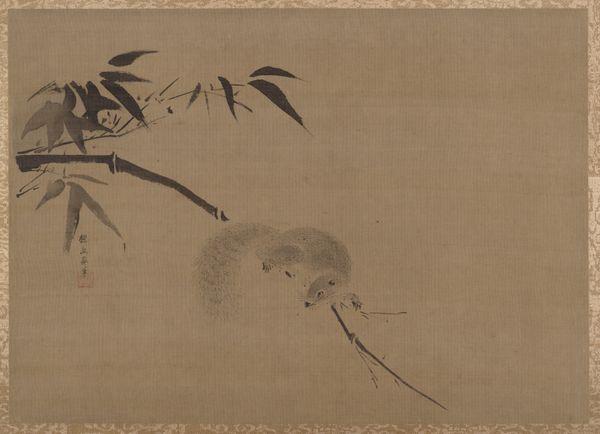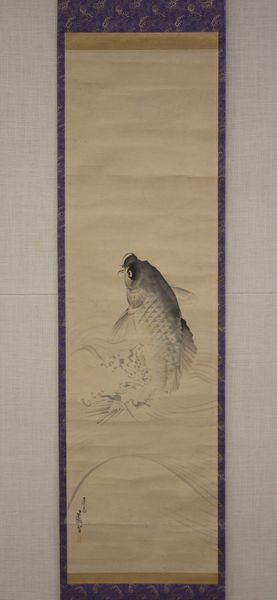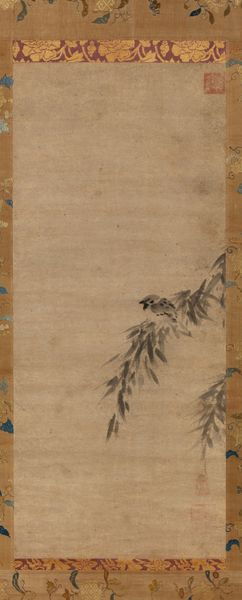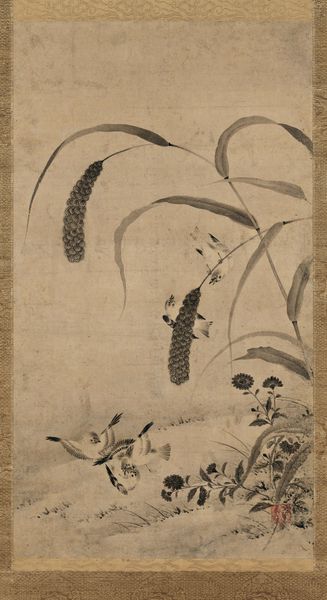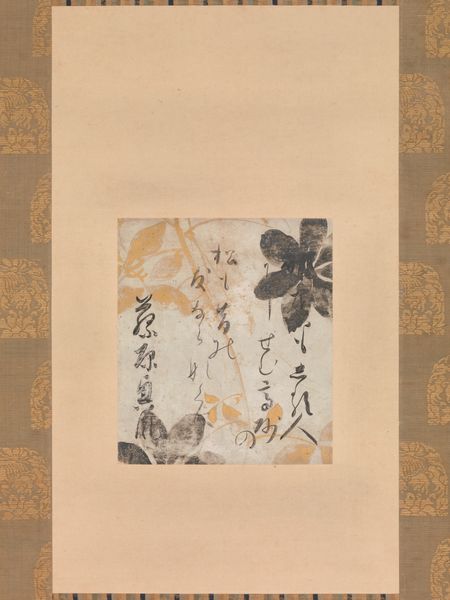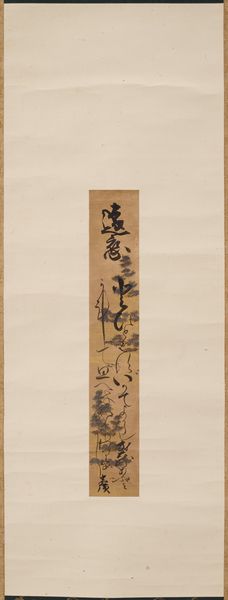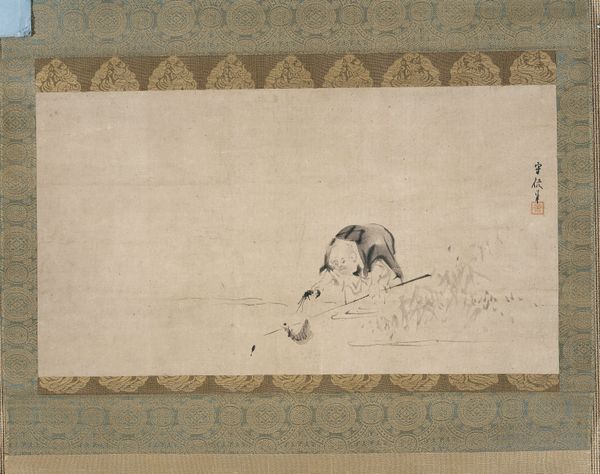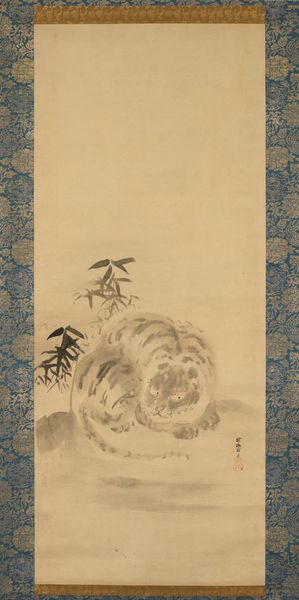
Tanuki (Racoon Dog) Viewing Its Reflection in Water 1868 - 1889
0:00
0:00
Dimensions: 49 3/8 x 19 1/2 in. (125.4 x 49.5 cm)
Copyright: Public Domain
Curator: So, here we have Kawanabe Kyōsai's "Tanuki (Racoon Dog) Viewing Its Reflection in Water," dating roughly from 1868 to 1889. It's a watercolor and ink drawing on paper. Editor: My first impression is one of profound stillness. The vast empty space of the scroll really emphasizes the solitary nature of the tanuki. And the muted tones are quite calming. Curator: The choice of materials certainly reinforces that quietude. Kyōsai's deft use of watercolor wash creates subtle gradations and textures on the paper support that capture a dreamlike quality. It is so delicate, and then he goes back and seals the work with that stark stamp on the corner there. Editor: Indeed, Kyōsai was working during a pivotal period of modernization in Japan, the Meiji Restoration. The increasing influence of Western art styles prompted a resurgence of interest in traditional Japanese art forms, including ukiyo-e, where animals are often used to reflect humanity's behavior in this form. Curator: Exactly. The production of this art, even with this more 'traditional' intention was always influenced by broader forces, by consumer desires, both native and foreign, even then. Consider that paper – was it locally sourced, or did trade networks play a role? What type of labor was involved in its preparation, the grinding of the ink, and in obtaining pigments for the washes? And, thinking of 'labor', just consider how quick, precise, experienced the hand making this image would have needed to be. Editor: And the Tanuki itself… the positioning of this animal in Japanese folklore. Tanuki were frequently portrayed as shapeshifters and tricksters, figures with complex relationships to the natural and human worlds. Perhaps this one staring at its reflection is a comment on identity in this rapidly modernizing era? Curator: Or even more broadly! Maybe the Tanuki's moment of self-reflection points to deeper considerations of human self-perception – an almost Buddhist interrogation of self, captured through simple means with water and paper. Editor: Well, it has given me plenty to think about, about the public's expectations and tastes through social transition, especially concerning a painting that is itself so incredibly private. Curator: And me! It makes me remember how interconnected material production is with cultural expression, with even something so seemingly simple.
Comments
No comments
Be the first to comment and join the conversation on the ultimate creative platform.
